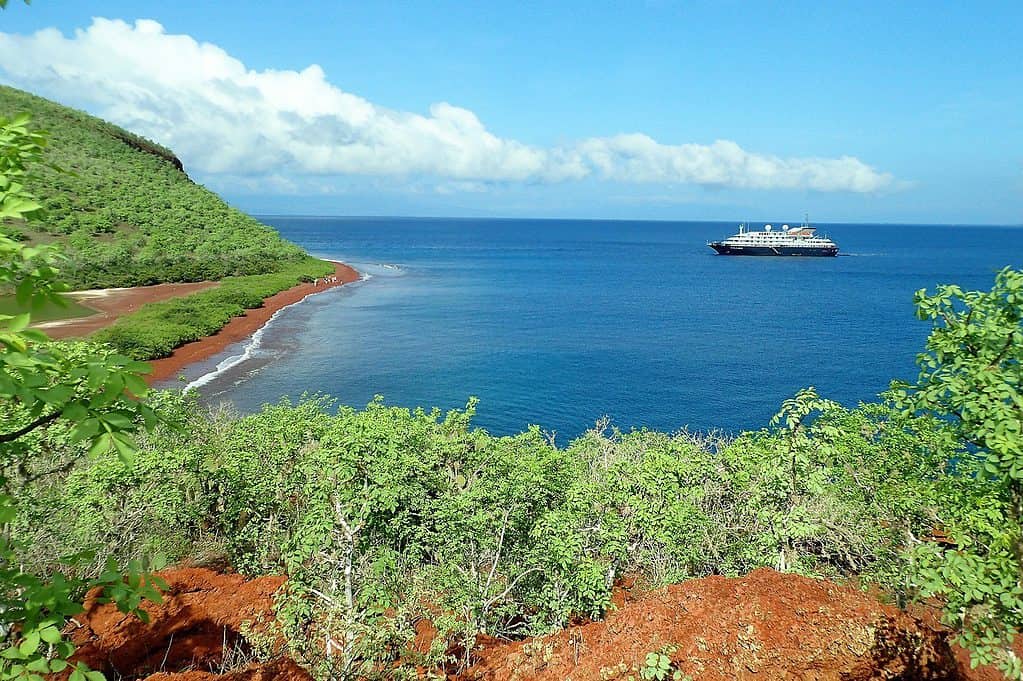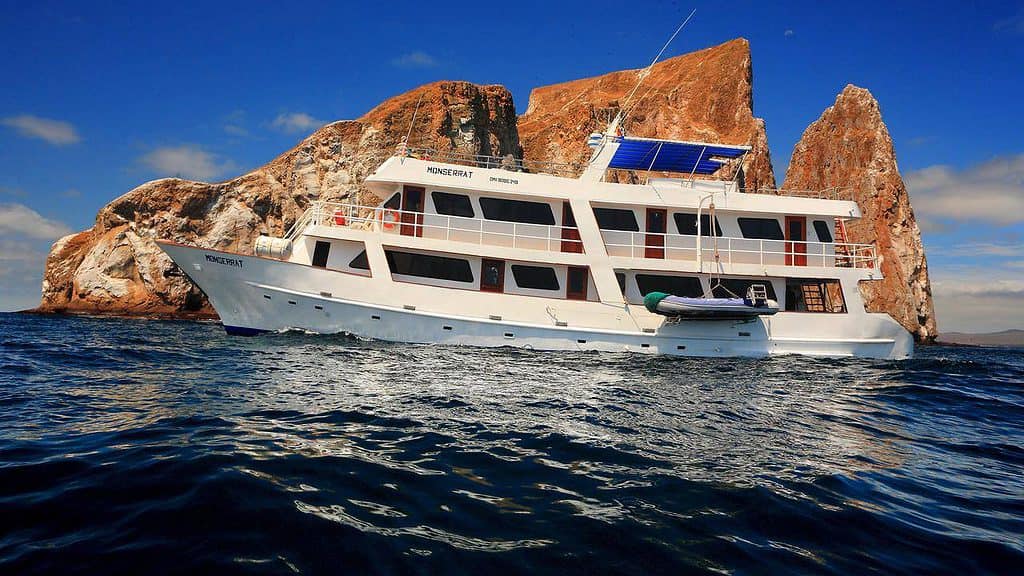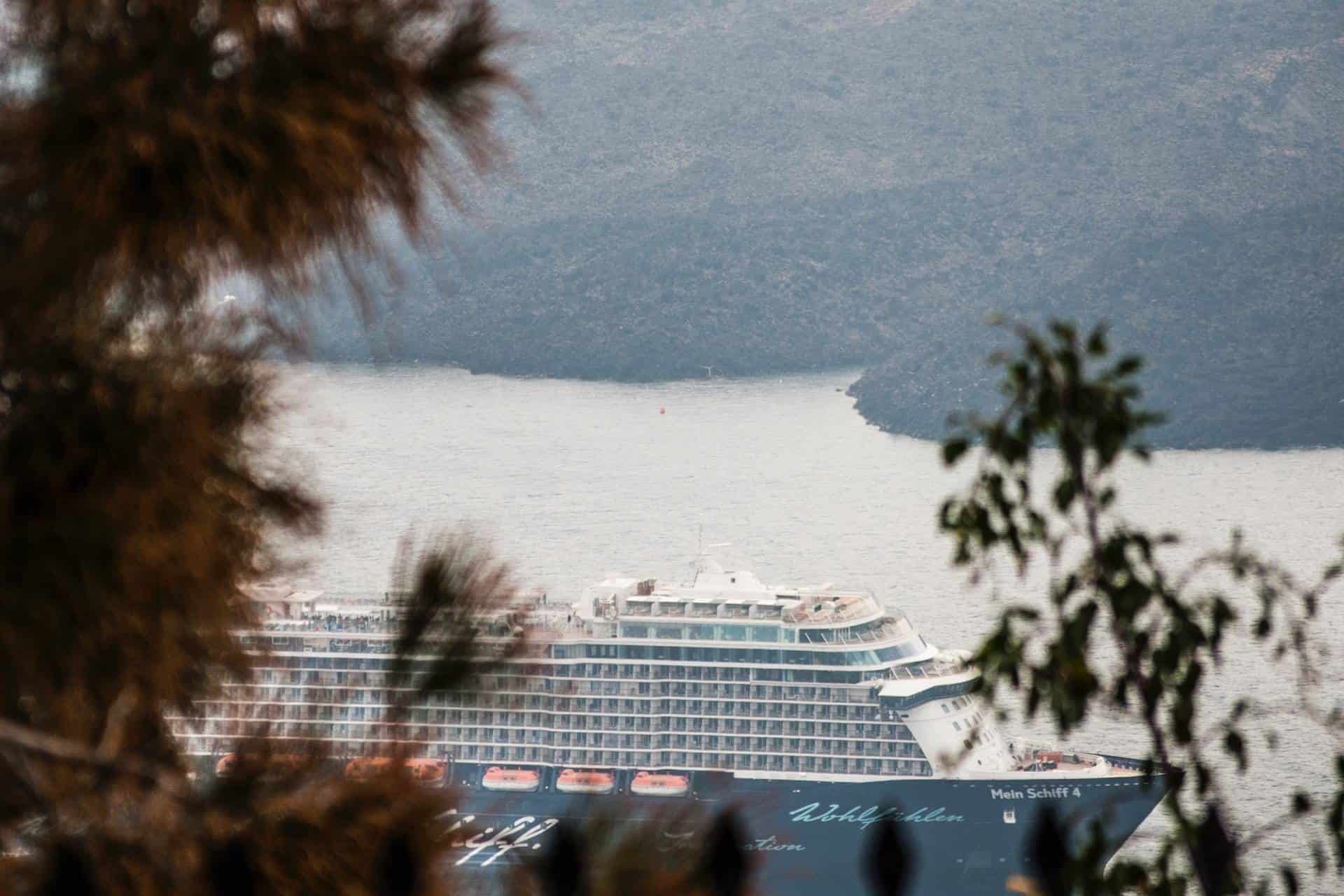Looking to join a Galapagos cruise?
Selecting the right Galapagos Islands cruise isn’t as simple as picking the first tour company on your Google search. There are many different types of cruises, and it’s important to understand your options before booking.
Many visitors select a short cruise (i.e., 3 or 4-nights) when a longer cruise is what they really would have preferred; or selecting a long cruise (i.e., 7-nights) when a shorter cruise would have been more than sufficient.

Things to consider when booking a Galapagos cruise
Check out our Galapagos Islands travel guide for more insight into traveling to the islands.
What is not commonly stated on Galapagos tour websites
The first and last day of any given cruise are short days (as they are based on the flight arrival and departure schedules into/out of Galapagos). Cruises really start with the arrival of your flight into Galapagos between 09h30 and 11h30 the morning of the first day of the cruise in Galapagos, and end between 08h30 and 10h30 in the morning of the last day of the cruise.
Most classify Galapagos cruises as 4-DAY, 5-DAYS and 8-DAYS when these cruises really translates into 2, 3 and 6 full days, respectively (or 3, 4 and 7 full nights, respectively) in the Galapagos Islands. The two partial days at the beginning and end of the cruise are mainly occupied traveling to and from the islands.
In our years of experience we have equal numbers saying that a 4-night cruise was the perfect length, while others stated that the 7-night experience was without a doubt the best. If you want to cover as much of the diversity that the Galapagos has to offer, the 7-night cruise is the best and only option for you.
Regardless of the vessel, they all navigate and operate in a similar fashion – the major inter-island transitions (i.e., from Espanola over to Floreana, for example) are done on the overnight hours. That way, when you awake the next day, the boat is already anchored off the island to be visited that morning. This maximizes the daylights hours, and thereby attempting to reduce transitions during the day to a minimum.
There are occasional transitions done on some boats between the morning and afternoon visit (these transitions may be to another point on the same island or to a nearby island). These however are generally not that noticeable as passengers are enjoying lunch aboard during the transition.
Itineraries are generally variations on a theme. That is to say, most boats visit similar sites – just maybe in a different order.
Islands & sites that are generally common to most cruises are (based on 7-night cruises)
– Baltra airport (not technically a tourist site but the start and/or end point of most cruises);
– Santa Cruz Island (i.e., Puerto Ayora, Charles Darwin Station, Highlands);
– Espanola Island (i.e., Punta Suarez & Gardner Bay);
– Florena Island (i.e., Punta Cormorant, Post Office Bay, Devil’s Crown);
– North Seymour
– (South) Plaza
– Santa Fe
– San Cristobal (i.e., Puerto Baquerizo Moreno, Interpretation Center, Leon Dormido etc.
Islands that are not as commonly featured in the majority of Galapagos cruise itineraries – but highly recommended – are:
– Fernandina Island (i.e., Punta Espinoza)
– Isabela Island (i.e., Elizabeth Bay, Urbina Bay, Tagus Cove etc)
– Genovesa Island (i.e., Darwin Bay & Prince Phillip’s Steps)
Just as important as the right duration for your cruise is, to find the right guide!
Without any doubt, the on-board naturalist guide is one of the MOST IMPORTANT aspects on a Galapagos Islands cruise. Although all are technically bilingual (Spanish / English), the degree of English spoken does vary. In addition, the level of knowledge regarding the Galapagos (i.e., the wildlife, the geography, the history etc) does play an important part.
You can have a guide that speaks almost fluent English but does not know a great deal on the Galapagos – you have a great conversation with them but won’t learn much about the wildlife, for example. Reversely, an extremely knowledgeable guide on Galapagos but one that has difficulty conversing in English won’t help that much either!
The key is to have a naturalist guide that not only speaks almost fluent English but is also extremely knowledgeable.
How to select the right vessel for a Galapagos Islands cruise
There are different advantages and disadvantages of the various types of vessel (cruise ship, motor catamaran, motor-sail catamaran, motor boat, sailing and motor-sailers).
The larger and heavier the vessel, the more stable it is in the water.

Cruise ships
The most stable (important for those extremely sensitive to sea sickness) are the large capacity cruise ships (i.e., Eclipse, Evolution, Galapagos Explorer II, Galapagos Legend, Isabella II, La Pinta & Santa Cruz). These vessels carry between 32 to 100 passengers, have spacious and well acquainted cabins & facilities, spacious decks and social areas and highly qualified and trained crew members. Cabins are generally allocated on two (or more) different decks. Several boast Jacuzzis, gyms and other perks. The possible disadvantages (depending obviously on one’s point of view) are the following: (1) generally attract an older and higher socio-economic clientele; (2) a greater number of fellow passengers; (3) the activities are generally geared towards older passengers so are not demanding (for those wanting a more active cruise – plenty of snorkeling & hiking etc – a smaller vessel is better suited for you); and (4) slower boarding and debarking of the vessel (i.e., for island visits) as passengers are divided into smaller groups of 16 to 20 passengers each.
Turning to the non-cruise ship options, you have:
Catamaran
(motor & motor sailers) that include Archipel I (aka Galapagos Journey III), Archipel II, Nemo II, Queen Beatriz (aka GAP VI), Queen of Galapagos, Seaman II, Treasure of Galapagos, Anahi, Athala & Nina;
The heavy, wide motor catamaran version (i.e., Archipel I & II, Anahi, Athala etc) are not only well appointed, but due to the width of the vessel are spacious in terms of cabins and social areas and stable. Some even have onboard jacuzzi to soak into after a long day hiking the islands. The lighter motor sailing catamarans (i.e., Nemo II etc) are comfortable and relatively spacious, but not as stable as their heavy motor brothers above.
Sail and motor sailers
Like Angelique, Encantada, Beagle, Cachalote, Mary Anne, Nautilus, Sagitta;
The sailing boats (most of them are technically motor sailers – when there isn’t sufficient wind, I think you would be glad that they can still navigate under motor power!) are long and narrow by nature. This makes them vulnerable to swaying (or rocking) in the seas … even when anchored. Most of these vessels have small and somewhat cramped cabins and limited deck and social areas.
However, vessels like the Beagle, Cachalote, and Mary Anne have an attractive and cozy atmosphere aboard. These vessels are, without a doubt, geared more towards your adventurous and active passenger. They provide and intimate experience – something that is hard to replicate on a large cruise ship.
Motor
The frequent type of vessels in Galapagos;
The bulk of the Galapagos cruise vessels fall into the ‘motor’ category – from your small, old & basic economic motor boats like the Amigo &New Flamingo right up to the luxurious and relatively spacious Galaxy, Voyager & Grace and Tip Top IV etc. The wider and heavier the motor boat is, the more stable it is. Many (but not all) of these motor vessels have cabins allocated on two (or more) different decks.
That being said, there is no one Galapagos cruise that is perfect for everyone. Each person has his or her particular likes and dislikes, expectations and requirements. Some prefer the large, comfortable cruise ships that carry 40 to 100 passengers while most prefer a more intimate, smaller option.
For those with an ecological and environmental concern and interest, there are a limited number of Galapagos boats that take serious steps to reduce any negative environmental impact and can be considered as responsible tourism options.
After you have chosen the right type of vessel, there are more interesting things to know
Capacity
The vast majority of the non-cruise ships are, on average for 16 passengers allocated into 8 double cabins – although there are a handful of boats with lower capacity (i.e., Nemo II carrying 12 passengers, for example) and several carrying more (Eric, Letty & Flamingo with a capacity of 20 passengers echa, for example). The large capacity cruise ships (Santa Cruz, Eclipse, Galapagos Explorer II, Galapagos Legend, Isabela II, La Pinta) carry between 40 to 100 passengers each.
Cabins
The standard cabins (characteristic of most boats) are double cabins, for two people, each cabin with its own private facilities (hot/cold water shower, bathroom) and normally air conditioning. Most 16-passenger boats only have double cabins (8) and usually do not offer single and/or triple cabins. A limited number of boats (generally the large capacity cruise ships) offer a limited number of single and/or triple cabins.
An important issue to keep in mind is the cabin location – that is to say how close/far the cabin is located to the rear (aft, stern) of the vessel. This is generally where the motors/generators of the vessel are located – thereby a higher probability of noise and/or heat effects to the surrounding cabins. Generally speaking (but depends on the mechanical layout of the boat in question) the father forward and up the cabin is, the farther away you will be from the motors/generators. This translates into less noise, vibration, heat and possible fuel aroma.
Cabins are found on one (or more) different decks. Depending on the boat(s) in question, these are usually LOWER, MAIN and/or UPPER decks. The higher up the cabin is located, the more likely one is to notice the sway of the boat in open water … but the added advantage is that it is not only farther away from the motors/generators but have better views and are more private.
Bedding
The standard bedding arrangements are upper / lower single bed berths (or bunk beds). Cabins that have one lower double (or Queen) bed or two lower twin bed are generally found on the larger/wider First and Deluxe classes cruise ships and catamarans (as these vessels are wider they have extra space to permit this type of bedding arrangement).
Galapagos travel tours
There are a few tour companies that organise Galapagos travel tours including a Galapagos cruise and visits to the main spots.
Some of the companies organising Galapagos Islands holidays include:
- GAdventures: ranging from seven to ten day tours.
- GetYourGuide: ranging from Galapagos day trips to a five-day nature tour.
- IntrepidTravel: ranging from eight days to 24 days including Galapagos island hopping and a tour that pairs with a Peru adventure.
Not keen a Galapagos cruise? Check out our post on:













